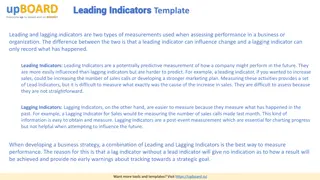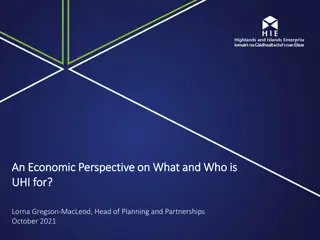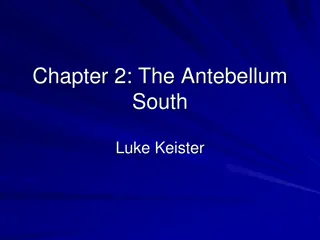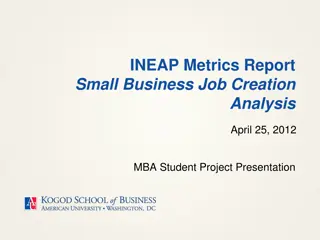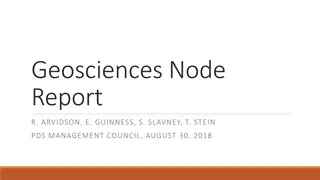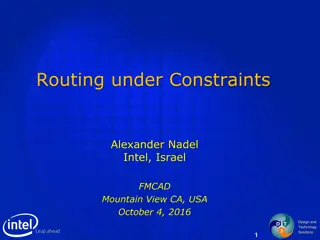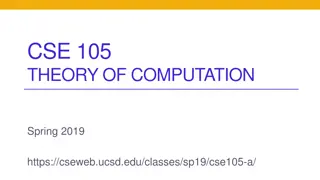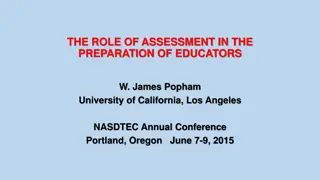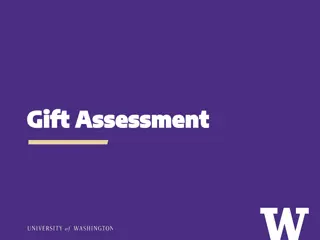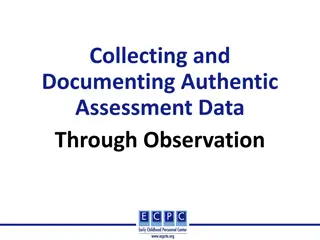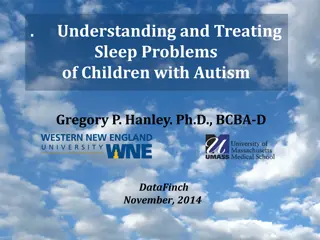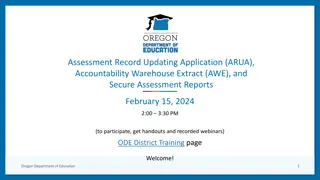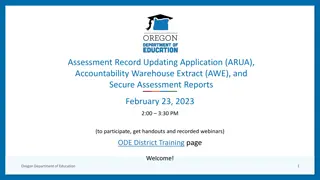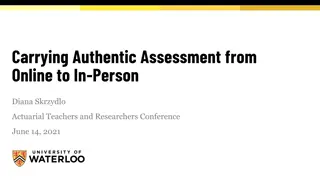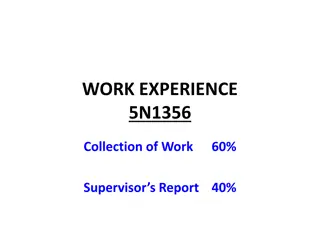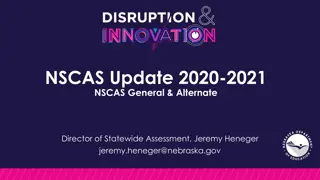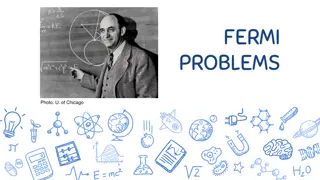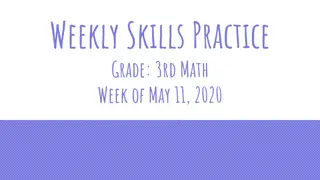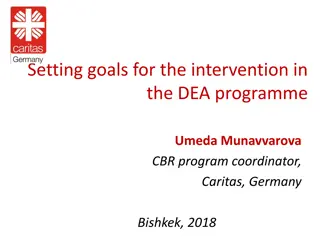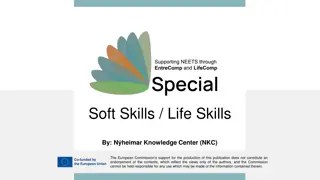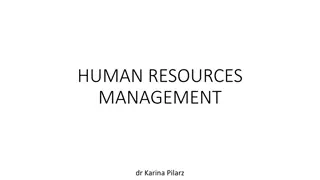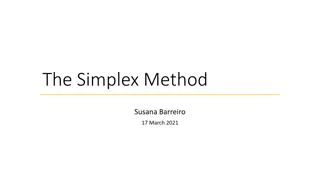Understanding the New Assessment of Lagging Skills & Unsolved Problems (ALSUP 2020)
Explore the updated ALSUP 2020 tool for assessing lagging skills and unsolved problems in children. The presentation covers the differences between the old and new ALSUP, the significance of lagging skills and unsolved problems, and how this assessment facilitates proactive interventions for children's challenging behaviors.
Download Presentation

Please find below an Image/Link to download the presentation.
The content on the website is provided AS IS for your information and personal use only. It may not be sold, licensed, or shared on other websites without obtaining consent from the author. Download presentation by click this link. If you encounter any issues during the download, it is possible that the publisher has removed the file from their server.
E N D
Presentation Transcript
Using the New Assessment of Lagging Skills & Unsolved Problems (ALSUP 2020) Michelle Rosenberg michelle.r@cogeco.ca
Welcome Introductions Overview
How Many of You. Have heard of an ALSUP? Have used the old ALSUP? Have used the new ALSUP?
Things I Find Hard About Using The ALSUP Are
Old vs New- Whats the Same? Single sided, single sheet of paper Discussion Guide Answers why and when behaviour is concerning not what Enables us to be explicit in our expectations Moves us away from motivational explanations to ones that that focus on skills Helps caregivers/educators appreciate why interventions focussed primarily on motivation (R & P) haven t worked Enables us to be proactive not reactive what do we do when? not what do we do before?
We Still Use the ALSUP 2020 As the standard pre-/post-referral, triage and assessment instrument With the top 10, 20, 30+ kids requiring the highest levels of support and greatest use of school resources those most involved in ongoing discipline processes
ALSUP 2020- Whats Different? Old ALSUP New ALSUP 23 LS 18 LS LS on left; UPs on right LS on top; UPs below Theories-UPs tied to specific LS No theories- all skills contribute 60-90+ minutes 30-45 minutes Generate own wording Prompts provided
Top Half- Lagging Skills the Whys Representative set of skills frequently found lagging in kids with concerning behaviour Skills important for responding to life s challenges & frustrations adaptively Not academic skills (literacy, numeracy) Not behaviour skills (sitting in a chair)
Bottom Half- Unsolved Problems the Whens - Specific circumstances and contexts in which concerning behaviour is seen - All expectations not being reliably met
How to Use the ALSUP 2020 All caregivers/educators most involved with the kid worth the logistical hurdles Lagging Skills (easy & fast)...3-5 seconds per skill Start at the top- does this LS apply to this kid? ; no consensus needed; not 100%, more often than not No need to establish which LS best explains an UP multiple LS involved going to find out from the kid during the Empathy Step Unsolved Problems Start with ALSUP prompts; consider ALSUP Guide 2020 examples What else? Go through the day Follow the four guidelines
Why is the Wording so Crucial? Translates directly into the words we are going to use when the UP is introduced to the child at the start of a Plan B Empathy Step Trying to optimize the likelihood the kid will talk to us Poorly worded UPs often cause the entire problem-solving process to come to a dead stop even before it gets started a Failure to Launch
Same Four Guidelines- ALSUP Guide 2020 1. No reference to the child s challenging behaviors. Start with replacement term Difficulty 2. No adult theories. 3. Split not clumped. 4. Specific contexts and expectations. Two strategies: a) W details (who, what, where, and when; not why) b) Ask What expectation is the child/student having difficulty meeting? Formula: Difficulty + verb (expectation) + context/circumstance specificity
Watch out for More than one unmet expectation per UP When Embedded LS language Tricky verbs- accepting, listening, understanding, appreciating, paying attention Embedded Plan A solutions Vocabulary Sentence length & structure ***Imagine saying these exact words to the kid
Lets Practice! Pick a kid, any kid Start with the first prompt break it down: a) Any tasks your kid/student is having difficulty getting started on? Like what? Like when? Like where? With who? b) Any tasks they re having difficulty completing? ( w s) c) Keep going
Lets Check! Any challenging or concerning behaviour language in your UPs? Any adult theories? ( because , when ) Any clumping going on? (getting along, schoolwork, chores) All w s answered? Expectation clear? (what is he supposed to be doing? What are all the other kids doing that she s not?)
Look for the look fors More than one unmet expectation per UP Other uses of When Embedded LS language Tricky verbs- accepting, listening, understanding, appreciating, paying attention Embedded Plan A solutions Vocabulary kid friendly? Sentence length & structure
Hmmmwhat about this one?
LITB TRAINING OPPORTUNITIES Half-day, 1 & 2 day Skill Enhancement School Implementation of CPS 15-week Proficiency Provider Certification For more information go to: https://livesinthebalance.org/worksh ops-and-trainings/


